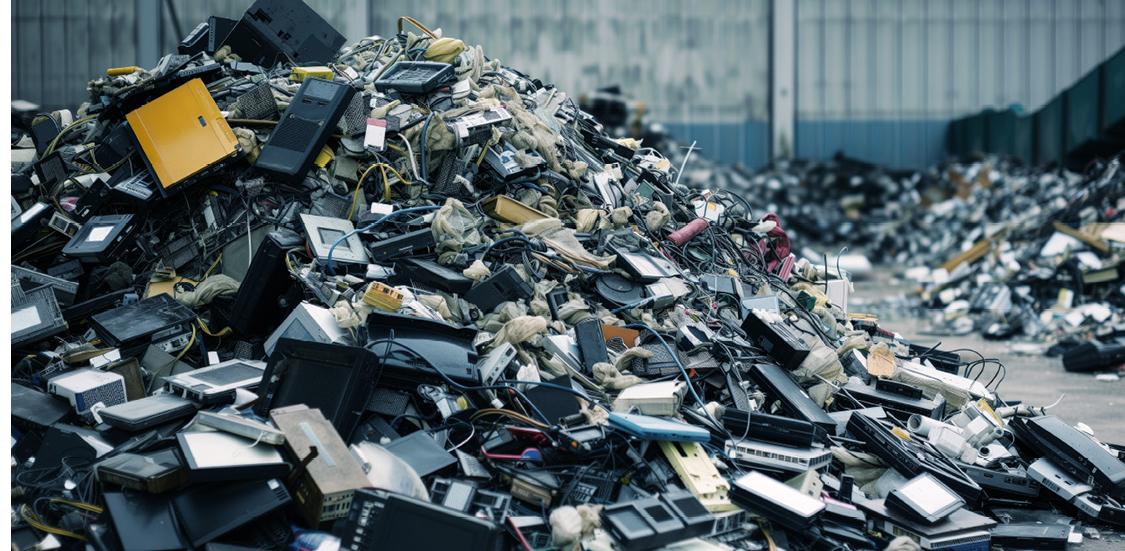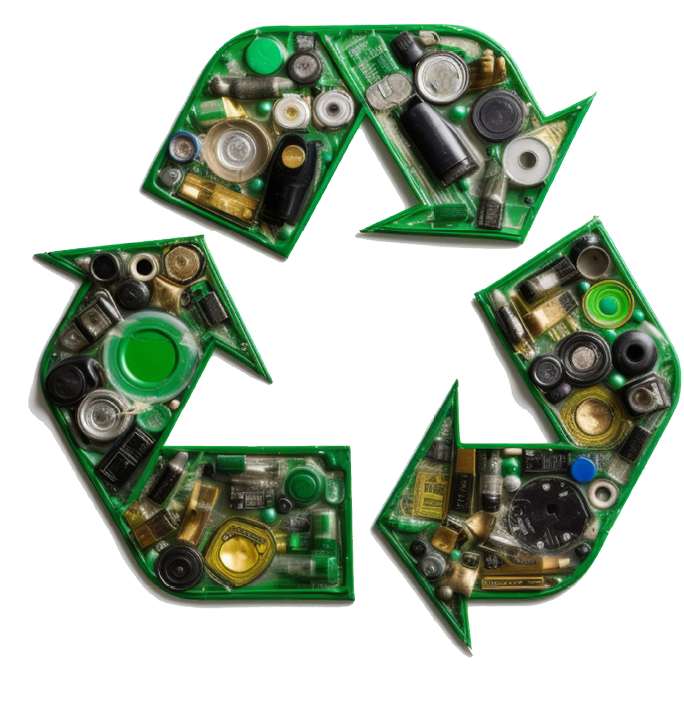Having weathered National Returns Week earlier In a world where technology evolves at breakneck speed, simply recycling or reusing electronics isn't cutting it anymore. The real competitive edge lies in something far bigger: mastering the entire lifecycle. Today’s leaders know that isolated sustainability efforts—however well-intentioned—fail to unlock true value. The future belongs to those who think in systems, not silos.
By weaving data and strategy into every stage—procurement, design, refurbishment, and end-of-life—companies don’t just reduce waste; they drive innovation, slash costs, and create future-proof ecosystems. Circularity is no longer a checkbox. It’s a business-critical mindset. And those who get it right? They’ll lead the next era of tech.

From Waste to Strategic Value: Why Electronics Need a New Life Cycle Playbook
The pace of technological turnover is relentless. Smartphones are replaced in under two years. Enterprise systems get scrapped within five. Meanwhile, the mountain of e-waste grows higher, bringing with it escalating environmental, financial, and regulatory risk. What once seemed like a byproduct of progress is now a crisis demanding transformation.
But amidst this churn, a global shift is gaining momentum. The old linear model—take, make, dispose—is being replaced by something smarter: circularity with strategy. No longer just a nod to sustainability, extending the life of electronics has become a geopolitical and economic necessity. In an era marked by supply chain instability, resource scarcity, and intensifying ESG pressures, piecemeal efforts like ad hoc recycling or isolated refurbishment simply don’t cut it anymore.
Governments are responding. The EU’s Green Deal and Right to Repair laws, alongside U.S. initiatives for domestic reuse and sourcing, send a clear signal: resilience is the new ROI. It’s about keeping value in the system, reducing dependency on fragile supply lines, and building material sovereignty.
To thrive in this new reality, organizations must stop treating circularity as a side project—and start managing electronics through a holistic life cycle lens. That means connecting every stage: from design and procurement to deployment, reuse, and end-of-life. Done right, this approach doesn’t just check compliance boxes—it drives innovation, strengthens operational agility, and delivers measurable sustainability impact.
This is the moment to reimagine electronics not as disposable assets, but as long-term value creators. Those who lead this shift won't just comply with the future—they'll define it.

Why Fragmented Efforts Fall Short—and Holistic Lifecycle Strategy Wins
Refurbish here. Recycle there. For years, organizations have relied on tactical, one-off actions to make their electronics use a bit more sustainable. But here’s the problem: circularity isn’t a checklist. It’s a system. And systems only thrive when every part works in sync.
The electronics value stream is more than a supply chain—it’s a living, breathing ecosystem. Every decision you make—whether it’s procurement, resale, or disposal—triggers a ripple effect across the entire product lifecycle. Miss the connection between those touchpoints, and you’re leaving massive value on the table.
Let’s break it down in a few examples:
- Procurement choices matter. Choosing low-cost equipment that’s hard to repair might save money today—but it guarantees higher costs tomorrow through maintenance, downtime, and waste.
- Sales channel strategy shapes feedback loops. Selling directly to end users doesn’t just streamline returns; it gives you real-world data on product performance—insight you can feed back into design, repair, and reuse.
- End-of-life handling isn’t just about disposal—it’s about material intelligence. Gaining control over obsolete assets opens the door to recovering high-value components, reducing your reliance on costly raw materials.
In this interconnected landscape, long-term thinking beats short-term fixes every time. When every phase of the lifecycle is intentionally aligned—from design and sourcing to operations and recovery—benefits don’t just add up. They multiply.
The ROI of Holistic Lifecycle Management:
- Financial Gains: Lower total cost of ownership (TCO), increased asset residual value, and smarter capital allocation.
- Operational Efficiency: Improved asset uptime, faster redeployment cycles, and cleaner tracking across systems.
-Sustainability Wins: Less e-waste, reduced demand for virgin materials, and verifiable emissions reductions.
The takeaway? Fragmentation and improving within the silo’s delivers small wins. Holistic strategy delivers transformation. Organizations that embrace the full scope of lifecycle thinking won’t just improve—they’ll future-proof.
Data as a strategic game-changer: driving innovation throughout the value stream
In circular electronics lifecycle management, data is a game-changer, not just an operational tool. It transforms routine maintenance, refurbishment, and recovery into valuable intelligence that can guide strategic decisions. However, to unlock its full potential, data must be integrated across the entire value chain, avoiding silos.
This integration is only possible within a unified lifecycle framework. When activities are fragmented across multiple providers and disconnected systems, feedback loops for continuous improvement are lost. In contrast, an end-to-end approach ensures full visibility and alignment from design to disposal.
Aftermarket insights as a strategic driver
Refurbishment and repair data provide essential insights into failure trends, component performance, and design weaknesses. When leveraged strategically, this data can drive a range of improvements, such as:
- Supplier performance optimization: For example, failure data strengthens negotiation leverage, enabling better supplier choices and higher-quality components.
- Product design improvement: Repeated failures or costly repairs can prompt redesigns focused on durability, modularity, and serviceability, extending product life.
- Predictive maintenance: Recognizing failure patterns, like frequent battery swelling or port failures, enables proactive maintenance, reducing downtime and extending asset lifespan.
These examples demonstrate how actionable insights can lead to targeted improvements, preventing broader issues and optimizing performance across the lifecycle. In essence, data bridges tactical execution and strategic foresight—but only when shared and acted upon throughout the value stream of electronics life cycle management.

Strategic levers in action: how interconnected decisions drive value
Organizations that treat electronics life cycle management as a strategic discipline—not a series of disconnected transactions—are realizing measurable benefits across financial, operational, and sustainability domains. The key lies in understanding that value creation is not isolated to individual interventions but emerges from the intentional alignment of activities across the value chain.
a. Return logistics as a strategic asset enabler
Far from a back-office function, return logistics is a strategic lever for maximizing asset value and accelerating circular outcomes. When structured effectively, it safeguards the physical and data integrity of devices, directly influencing refurbishment yield, resale potential, and redeployment speed.
By organizing returns through standardized, protective packaging and simplified user processes, companies can:
- Preserve asset condition for higher-value recovery
- Enable faster turnaround and redeployment
- Improve data quality for sustainability and compliance reporting
- Enhance customer experience and NPS through frictionless returns
In short, well-orchestrated return logistics not only protects assets—it transforms them into higher-value contributors within the circular value stream.
b. Design for circularity: strategic supplier alignment for long-term flexibility
Procurement decisions have long-term ripple effects. When purchasing teams prioritize devices based only on upfront cost or performance, they may inadvertently lock the organization into higher long-term costs and reduced circularity potential.
A more strategic approach is to embed design-for-circularity criteria into supplier selection, ensuring that products are:
- Built with modular, repairable architecture
- Supported by accessible service documentation and parts
- Designed for disassembly, not disposal
Choosing vendors who align with circular design principles enhances flexibility across asset refresh cycles, lowers TCO, and increases the likelihood of successful reuse or resale. For example, selecting laptops with swappable batteries and standard screws may slightly increase initial capex—but drastically improves downstream recovery value and serviceability.
This forward-aligned supplier strategy turns procurement into a driver of operational agility and sustainability performance, rather than a cost center.

c. Circular waste management: from disposal to strategic material recovery
End-of-life (EOL) processes have traditionally been handled reactively—handing off unwanted devices to third-party recyclers with limited oversight. But in a holistic model, EOL becomes a source of competitive advantage through controlled material recovery and reintegration into supply chains.
By partnering with recyclers and suppliers committed to closed-loop systems, organizations can recover and reintegrate high-value materials—like aluminum, plastics, and rare earth metals—into new manufacturing cycles. Strategic benefits include:
- Cost savings through recovered parts and reduced virgin material demand
- Improved ESG performance via verifiable circularity and emissions reductions
- Supply chain resilience by reducing exposure to volatile material markets
This shift from passive disposal to active material recovery requires visibility, traceability, and integration with suppliers who can convert waste into inputs. In doing so, companies build a more self-reliant, circular ecosystem—aligned with both sustainability goals and strategic risk mitigation.
Summary: Break the Silos, Build the Future
Look closely at every breakthrough in circular lifecycle success, and one theme stands out: real value emerges at the intersections.
To truly capitalize on the financial, operational, and environmental gains of extended electronics lifecycles, companies must stop thinking in isolation—and start thinking in ecosystems. The future of lifecycle strategy isn’t confined to one department, one vendor, or one stage. It’s cross-functional, cross-organizational, and deeply collaborative.
This means orchestrating the entire supply chain is needed:
- Procurement working hand-in-hand with IT and sustainability leaders.
- OEMs co-innovating with refurbishers, recyclers, and reverse logistics experts.
- Ecosystem partners sharing data, demand forecasts, and asset intelligence in real time.
It requires more than better tools. It demands a new mindset—from managing assets to orchestrating ecosystems. And when this mindset takes hold, the rewards scale far beyond individual company metrics.
When the industry unites around shared standards for design, reuse, material recovery, and reporting, everyone wins:
- Investors gain more stable, ESG-aligned portfolios.
- Customers get more reliable, affordable, and sustainable tech.
- Regulators see progress on climate and circularity goals.
- And the planet benefits from less waste and smarter resource use.
Final Thought: It's Not Just About Lifespan—It's About Lasting Impact
Extending the life of electronics isn’t a side mission anymore—it’s a strategic lever for business resilience, environmental stewardship, and industry transformation. But the real magic doesn’t come from isolated actions. It comes from connected ones.
From design to disposal, every step holds untapped potential. And when those steps are linked by a shared vision, organizations can:
• Unlock new revenue streams,
• Drive down total cost of ownership,
• Strengthen regulatory alignment,
• And create measurable sustainability outcomes.
This is the moment to go beyond ambition. To move from intent to impact.
To build the systems, partnerships, and mindsets that turn electronics into long-term value creators.
Because at the end of the day, it’s not just about how long a product lasts.
It’s about how much value it creates—over and over again.
Wijnand is an experienced leader in logistics, business development and digital transformation. Driving the growth of Logicall, a company that provides integral supply chain and circular logistics solutions. In earlier roles at amongst others KLM Royal Dutch Airlines, Wijnand developed a deep understanding of complex operations, international business, data and customer-centric strategies.